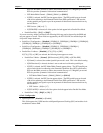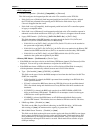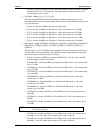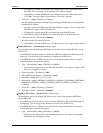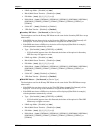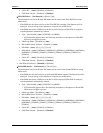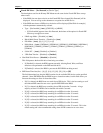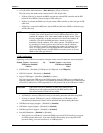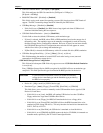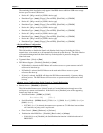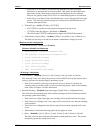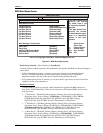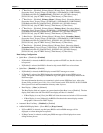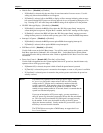
Chapter 4 BIOS Setup Utility
76 Reference Manual XTX 820
• ATA (PI) 80 Pin Cable Detection – [Host & Device], [Host], or [Device]
This field selects the method used to detect the ATA (PI) 80-pin cable.
∗ If [Host & Device] is selected, the BIOS uses both the onboard IDE controller and the IDE
hard disk drive (HDD) to detect the type of IDE cable used.
∗ If [Host] is selected, the BIOS uses only the onboard IDE controller to detect the type of IDE
cable used.
∗ If [Device] is selected, the BIOS uses only the IDE hard disk drive (HDD) to detect the type
of IDE cable used.
NOTE An 80-conductor ATA cable is required when operating with Ultra
ATA/66, Ultra ATA/100 and Ultra ATA/133 IDE hard disk drives. The
standard 40-conductor ATA cable cannot handle the higher speeds. Due to
the plug compatibility of the 80-conductor ATA cable to the standard 40-
conductor ATA cable, the BIOS must have a feature to set this or
determine if the 80-conductor ATA cable is present. The BIOS does this
by searching for a break (open) in one of the lines in the 80-conductor
ATA cable that is normally connected in the standard 40-conductor ATA
cable. If a faster speed is set in the BIOS than the connected cable can
support, the BIOS instructs the IDE HDD to run at the correct (or slower)
speed for the cable type detected.
>USB Configuration
Depending on the USB devices detected, examples similar to those listed below may be displayed.
Module Version - x.xx.xx-xx.x Or Module Version - x.xx.xx-xx.x
USB Devices Enabled: USB Devices Enabled:
2 Drives None:
• USB Function – [Disabled], [2 USB ports], [4 USB ports], or [6 USB ports]
• USB 2.0 Controller – [Disabled] or [Enabled]
• Legacy USB Support – [Disabled], [Enabled], or [Auto]
This field supports the USB mouse and USB keyboard when no USB drivers are loaded for the
operating system (OS). If this option is not enabled, the attached USB mouse and USB keyboard
will not be available until a USB compatible OS is fully booted with all the USB drivers loaded.
CAUTION If this field is not set to [Enabled] or [Auto] the USB mouse and
USB keyboard will not be recognized by the BIOS until the OS is
fully booted and the USB drivers are loaded.
∗ If [Enabled] is selected, USB devices may be used during boot time and while using DOS.
∗ If [Auto] is selected, USB devices, such as a USB keyboard or USB mouse will be
automatically detected and if found, will be initialized and utilized during Boot time.
• USB Keyboard Legacy Support – [Disabled] or [Enabled]
• USB Mouse Legacy Support – [Disabled] or [Enabled]
• USB Storage Device Support – [Disabled] or [Enabled]
• Port 64/60 Emulation – [Disabled] or [Enabled]
∗ If this field is set to [Enabled], it allows the BIOS to provide full PS/2 based legacy support
for USB keyboard and mouse. It provides the PS/2 functionality such as keyboard lock,
password setting, scan code selection etc. to USB keyboards.




